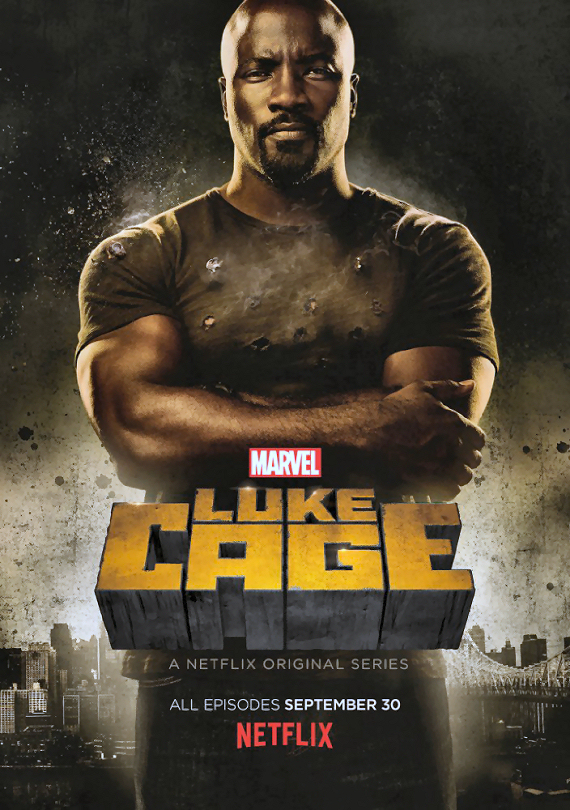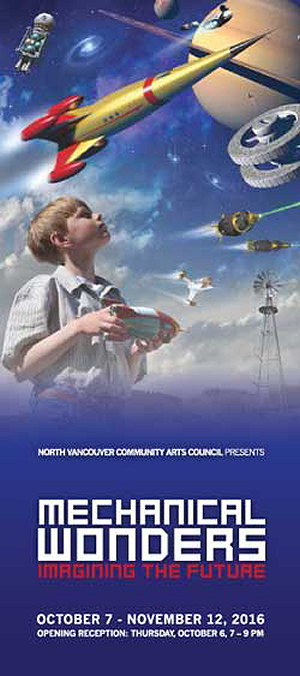
Until a couple of days ago, I’d never read a book by Chuck Wendig (Figure 1). For about a year now, I’ve been reading his blog, because the man is simply a brilliant blog writer (check the link). I started reading because he has a lot to say about writing, and I’m a writer. I’m always looking to find out something new about the craft, or to help me write better, or even something I can pass along to people who simply want to be writers and need information or a bit of a boost to do so. Chuck’s blog is, by turns, informative, profane (he uses naughty words, lots of ’em), zip-zip-zip fast, provocative, fun and/or humourous, exasperating, and wonderful. (In terms of humour in blogging, I consider him SF’s answer to Dave Barry — and that’s high praise indeed.)
When his new book Invasive was published in mid-August — and he let everyone who subscribes to his blog know about it — I determined to read it, to see if he’s as good at fiction as he is at blogging. Now, I get most of my books as ARCs (Advance Reading Copies) because hardcovers are darned expensive in Canada, but I decided that it sounded like so much fun I had to buy a copy. (I started looking for the book two days after it was published, because I found myself at a mall where there was an independent bookstore. And I like independent bookstores and support them whenever I can. But could I find it? Noooo…) So this past weekend, at VCON 41, I went up to the first bookseller I could find and bought it. $35 Canadian and change. But I support independent booksellers, so I gritted my teeth while I bought it.

The cover features ants. Yeah, you know, little black (or red) things with six legs plus mandibles that can bite and a stinger. There are ants printed on lots of the pages, as if they’re coming out of the binding. There’s a clue here somewhere, I figured. So I get home from the con and open the book and start reading. Here’s the synopsis off Amazon: Hannah Stander is a consultant for the FBI — a futurist who helps the Agency with cases that feature demonstrations of bleeding-edge technology. It’s her job to help them identify unforeseen threats: hackers, AIs, genetic modification, anything that in the wrong hands could harm the homeland. Hannah is in an airport, waiting to board a flight home to see her family, when she receives a call from Agent Hollis Copper. “I’ve got a cabin full of over a thousand dead bodies,” he tells her. Whether those bodies are all human, he doesn’t say. What Hannah finds is a horrifying murder that points to the impossible — someone weaponizing the natural world in a most unnatural way. Discovering who—and why — will take her on a terrifying chase from the Arizona deserts to the secret island laboratory of a billionaire inventor/philanthropist. Hannah knows there are a million ways the world can end, but she just might be facing one she could never have predicted — a new threat both ancient and cutting-edge that could wipe humanity off the earth.
Whoa, over a thousand dead bodies in one cabin, and ants all over the cover and pages. Here’s a “duh” moment for you! Yes, you guessed it — it turns out there are genetically-modified ants, but how and why — and what their modifications are — is only the tip of the iceberg here. Wendig has a real skill at upping the stakes; what we’ve got here is worse than Jurassic Park or Jaws, and it escalates practically from moment to moment as soon as the action starts. But until the action starts, we’re given a pretty good character sketch of Hannah; although she’s just a consultant for the F.B.I. and not actually an agent, she has unexpected depths, and is constantly reminded of her past by current events. (If you strip it down, some of the action is obviously modeled on movies; I have a feeling Chuck sees more than a few of them.) But Hannah’s no shrinking violet, either. She has faced traumas in her past, and in many ways is more prepared than anyone to face this threat. And make no mistake, it’s a threat to — not only humanity, but other kinds of life on Earth.
The billionaire do-gooder, whether it’s Elon Musk, Bill Gates or some others, is a type familiar to all of us, and the issue faced in the novel is real: when we have the power to modify life at will — even if we can’t create it from scratch (and indications are that we just might be able to do that sooner than ever thought possible!) — we also have the power to destroy life. And there are lots of fanatics right now on the planet, in real life, not just in books and movies, who are happy to wipe out any life — human or not — that doesn’t fit their preconceived notions of what’s good and necessary. In some ways the book is reminiscent of Michael Crichton’s Micro, and various other books you might have read; in a couple of ways it’s sui generis — a thing all its own — but either way it is an indisputable thriller! And well worth the $35, even if it did end too darned soon! (Yeah, I’m one of those people who want a well-written book to just keep on going.) I give this book five ¤¤¤¤¤s. (Whatever the heck those things are.)

Seems like only a short time ago I reviewed the July-August issue of F&SF, and here we are looking at the September-October issue! And it’s a special one: a tribute to writer David Gerrold, with a terrific cover by David A. Hardy! (Figure 4 is a picture David posted to Facebook of the cover painting without all the magazine overlays. I think it’s important, because David Hardy has never met David Gerrold, and yet the cover is perfect!) F&SF has done a number of tribute issues, beginning when Avram Davidson was editor, and I think Gordon van Gelder has done four so far. It’s a fine tradition.
I first met David Gerrold in 1975, at Westercon 28 in Oakland (“OakLaCon”), where he delivered the keynote speech, called “Stomp the Shadowman.” The speech was about that invisible double most celebrities (including SF/F professionals) cite in anecdotes about how awful they are, or what kinds of trouble they’ve been in — somehow mostly bad stuff, seldom good stuff — and David argued that maybe it was time we stopped looking at the shadowman (“Shattenganger” in German) and started dealing with the real pro in front of us. It was a cool speech, and David kindly gave us permission to reprint it in New Venture. (When I say “us,” I’m referring to me and my friend, the late Jon Gustafson, who was my partner in NV.) David also gave a reading from one of the Chtorr books, which he said would be coming out soon. (I think “soon” actually turned out to be something like 20 years.)

Anyway, the special Gerrold issue is here, and contains two Gerrold novellas. The first one, “The Further Adventures of Mr. Costello,” was written by permission of the estate of the late Theodore Sturgeon, a writer I admired from the first day I read one of his stories. The other, “Baby Is Three,” was later expanded into a novel, More Than Human. Mister Costello was the subject — but not the hero — of a famous Sturgeon story, and David G. figured there was more to say on the subject of Mr. Costello, so he kindly provided it for us. It is “pure quill” SF; and although it doesn’t deal with space ships or military SF or any of that stuff usually called “hard SF,” it’s as hard as any SF there is. Set on a planet called “Haven,” which has a beanstalk, it’s as ecological a story as any the late James H. Schmitz ever wrote. It’s extremely futuristic in its treatment of ecology, of sex and gender, and various other themes. There’s a lot packed in this, and I enjoyed the heck out of it. I won’t describe the other Gerrold novella, except to say that if you read and enjoyed his ghost story in one of the previous F&SFs, you’ll probably like this one. (I believe in leaving a certain amount of mystery in my reviews — it’s part of my dislike for spoilers.) The story is called “The Dunsmuir Horror,” an obvious takeoff on H.P. Lovecraft, and is written as a series of letters from Gerrold to his and F&SF’s (previous) editor, Gordon van Gelder. It’s humourous and contains numerous in-jokes; I’ll tell you that much. Dang that Gerrold; he can write!
There is also a poem not related to David; it’s called “The Dragon,” by Aimee Ogden. It’s short, but I liked it.
There is a story by Lisa Mason (author of Summer of Love, The Gilded Age, and Arachne — now available as an ebook — among others), called “Anything For You.” It’s a chilling look at a couple of technological trends that are already in play — for example, people are now spending as much time looking at their phones as the people they are supposed to be interacting with; and what will happen when the “Choose Your Own Adventure” books lend their format to the mass media? When, aided by an AI, anyone can divert the course of the TV show they’re watching? Nicely written, and all too likely to become reality.
Peter S. Beagle takes us back to the beginning of what became The Last Unicorn, before Schmendrick became a wizard. Ever wonder why he’s called Schmendrick? A nice little character study.
Geoff Ryman’s story, “Those Shadows Laugh” is written from a woman’s point of view, about a country where women — a separate version of Genus Homo — live and reproduce parthenogenetically. It is a well-imagined and well written story of love and loss.
There are also stories by Leah Cypess (“Cupid’s Compass”); Sarah Pinsker (“Talking to Dead People”); Desirina Boskovich (“The Voice in the Cornfield, the Word Made Flesh,”); all of which are quite well written and, I think, affective. (I figure if it affects me, it will affect others. I could be wrong; I am, in some ways, weird.) Two standouts are Steven Popkes’s “The Sweet, Warm Earth,” which is definitely an oddity… it’s a “mobster” story set in the sixties, and kind of reminiscent of Damon Runyon, but not like Runyon. It concerns horse racing and an “enforcer” type who meets a “horse whisperer.” It’s different, but I liked it. And the other standout is Ian Creasey’s “A Melancholy Apparition.” If you’re familiar with Samuel Johnson and James Boswell, his biographer, you will recognize the characters in this story. It’s a period story set in the 18th century, and it’s also a ghost story. But it reveals a bit about Boswell that we might not have suspected. As far as I can tell, the period details are excellent, and I think the story is, too. I give this issue a further five what’s-its. So ¤¤¤¤¤.

SHORT TAKES: I haven’t been watching a whole lot of TV as the new season begins, neither all the shows I used to watch, nor all the new shows. Two new shows I’ve seen one or two episodes of are Luke Cage (Figure 5) and Westworld. Luke Cage, on Netflix, is a spin-off of Marvel’s Jessica Jones; I’ve seen three episodes and it is developing nicely. I’m not familiar with most of the actors — except Alfre Woodard, whom I first noticed in St. Elsewhere in the mid-1980s and have followed since — but I sure like most of them; the series seems to be developing slowly, but Mike Colter, who plays Luke, is a very handsome and engaging fellow. I wish I were that good-looking and buff! I’m looking forward to the rest of the season. HBO has Westworld, which means they’re not posting the entire season at once. It is intriguing — it has Anthony Hopkins in it, and Ed Harris playing a bad guy — and it has caught my interest. The graphics and SFX (which serve the story, and don’t drive it) are superb so far!

And now we have an article — strictly SF/F related! — of local interest to people in the Vancouver area: the North Vancouver Arts Council is putting on a month-long exhibit of “Mechanical Wonders, Imagining the Future” featuring art by my wife, the Beautiful and Talented Lynne Taylor Fahnestalk (her ‘Bots); “Chinese steampunk” art by James Ng; hanging robotical contraptions by Ron Holzman; humourous SF/F art by Hing Kei; and futuristic art by Dan J. O’Driscoll. Any SF/F fan in the area will be entranced by this exhibition! (And for those of you at home, feel free to click on any link for further information on these talented artists!
If you can, please comment on this week’s column. Go ahead and comment here, or comment on my Facebook page, or in the several Facebook groups where I publish a link to this column. Your comments are all welcome; and don’t feel you have to agree with me to comment. My opinion is, as always, my own, and doesn’t necessarily reflect the views of Amazing Stories or its owners, editors, publishers or other columnists. See you next week!











Well, having now seen Ron Holzman’s “found object” sculptures, I must say they’re not really robotical—but they are cool and intriguing! If you’re in the Lower Mainland, get up to North Van and take a look in the gallery; you missed the free food by not showing up last night, but the art—all of it—is stellar!